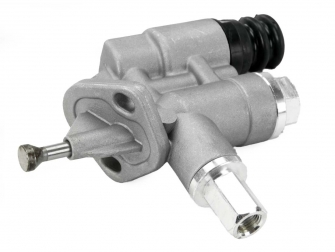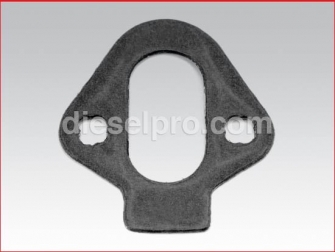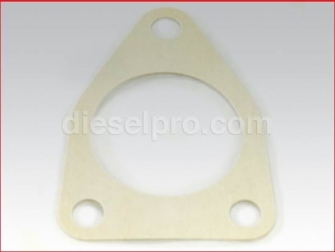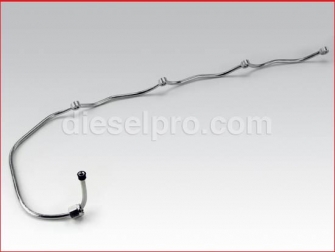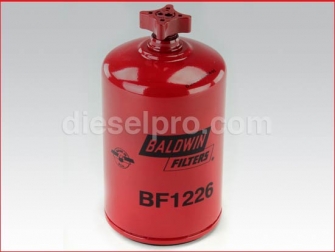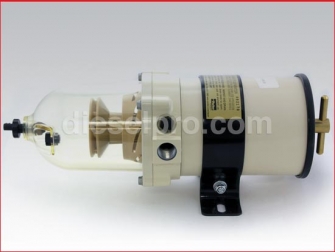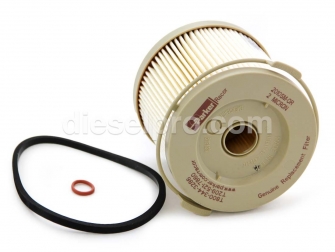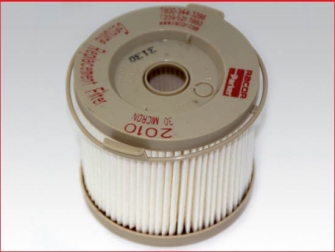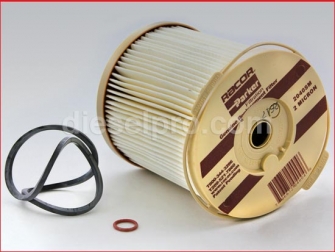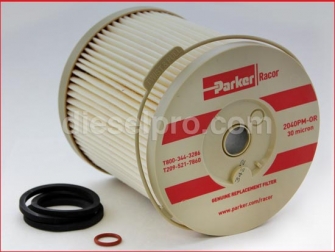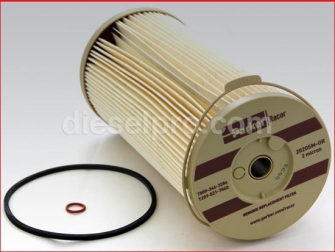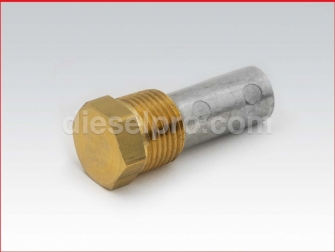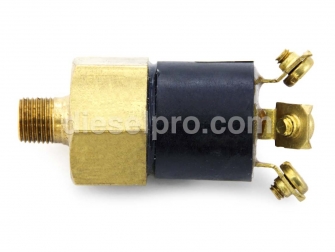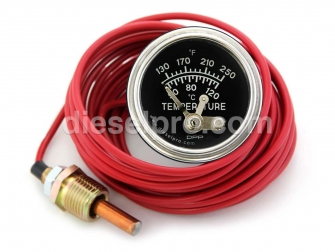Cummins 4BT Engine Parts - Fuel Pump Section
 Loading...
Loading... Cummins 4BT Fuel Pump and Fuel System Components
The Cummins 4BT 3.9L engine is widely recognized for its durability, simplicity, and versatility in industrial, marine, agricultural, and off-road applications. One of the most critical systems contributing to its reliable performance is the fuel system—particularly the fuel pump and supporting components. Whether you’re operating in a marine environment or using a 4BT engine for stationary power generation or heavy machinery, having a dependable fuel delivery system ensures consistent operation and efficiency under demanding conditions.
Understanding the Role of Fuel Pumps in the Cummins 4BT
At the heart of the Cummins 4BT’s fuel system lies the fuel transfer pump—a mechanical device that supplies fuel from the tank to the injection system. Without a properly functioning fuel transfer pump, the engine cannot maintain consistent combustion cycles. On marine engines especially, reliable fuel delivery is crucial for sustained operation at sea, where fuel starvation can quickly lead to engine failure or vessel immobilization.
Mechanical fuel pumps, common on the 4BT, are preferred for simplicity and ruggedness. These pumps rely on the engine’s camshaft to create suction and push fuel toward the injection system. Unlike electric pumps, mechanical models are less susceptible to electrical faults and often easier to service in remote or industrial environments.
Cummins Fuel Transfer Pumps for 4BT and 6BT Engines
Mechanical Lever Fuel Transfer Pump
This classic-style fuel pump features a mechanical lever and is compatible with both 4BT and 6BT engines. Its simplicity makes it a favorite among operators of construction equipment, marine generators, and agricultural pumps. Common scenarios where this fuel pump is ideal include:
-
Marine generators running 24/7 in offshore environments
-
Mobile construction units powered by Cummins 3.9L or 5.9L engines
-
Field-service trucks where reliability and quick maintenance are critical
The mechanical lever design reduces failure points and does not require external power, making it a rugged option in harsh environments.
Mechanical Piston Fuel Pump (For Non-Rotary Pumps)
Used in systems without rotary-style fuel pumps, this piston-driven mechanical pump ensures efficient fuel delivery by creating higher pressure on demand. The piston mechanism is especially suited for:
-
Industrial generators operating under variable load conditions
-
Hydraulic power units using constant-speed Cummins engines
-
Harsh marine climates, where fuel consistency and water separation are paramount
The piston pump design supports a consistent volume of flow and can better handle variations in fuel tank pressure, especially in vertically-mounted engine configurations on marine vessels.
Supporting Components for the Fuel System
Fuel Transfer Pump Gaskets
Each fuel pump requires a reliable cover plate gasket to prevent leaks and maintain fuel system pressure. These gaskets are small but vital—they ensure that the pump housing remains sealed, protecting against contamination and maintaining vacuum suction integrity.
Applications include:
-
Heavy-duty marine applications, where fuel system integrity must be maintained in rough seas
-
Off-grid diesel generators, where downtime can result in loss of power to critical systems
Each fuel transfer pump typically requires two gaskets, and it is strongly recommended to replace both during any fuel pump service to avoid leakage.
Fuel Injection Pump Gasket
The fuel injection pump gasket forms a critical seal between the injection pump and the engine block. A compromised gasket can lead to:
-
Loss of pressure in the injection system
-
Introduction of air into the fuel line
-
Fuel leakage resulting in hazardous working conditions
Commonly replaced during fuel system overhauls, this gasket supports all variations of the 4BT family, including 4B, 4BTA, 6B, and 6BTA models. It is ideal for operators replacing mechanical injection pumps or performing top-end rebuilds.
Fuel Shutoff Solenoid for 4BT Engines
The 12-volt fuel shutoff solenoid is a safety-critical component. It allows the operator or control panel to electronically cut fuel delivery during shutdown procedures or in the event of an emergency.
Used in:
-
Marine diesel applications, especially in enclosed engine rooms where emergency shutoff is a regulatory requirement
-
Remote industrial sites, where automatic fuel cutoff is used in alarm shutdown systems
The solenoid is compatible with the 3.9L, 5.9L, and 6.7L Cummins platforms and features a robust design rated for continuous-duty environments.
Cummins 4BT Fuel Manifold
This fuel manifold is responsible for evenly distributing diesel fuel to each injector, especially in multi-cylinder applications. It plays a crucial role in preventing fuel starvation to any single cylinder, which could cause engine knock, incomplete combustion, or injector damage.
Operators typically use this manifold in:
-
Marine propulsion systems with inline 4BT configurations
-
Fire pump engines, where balanced fuel flow is essential for uninterrupted operation
-
PTO-driven equipment, such as winches or cranes that rely on consistent torque output
The manifold for 4B and 4BT engines is engineered to withstand vibrations and thermal cycling common in commercial marine applications.
Fuel Filtration and Water Separation Systems
Fuel quality directly affects injector performance and engine life. The Cummins 4BT engine, particularly in marine environments, is vulnerable to water intrusion and diesel contaminants. This is why proper fuel filtration is non-negotiable.
Primary Fuel Filters
-
Cummins Fuel Filter (4990879)
This spin-on style filter removes particulate matter from fuel before it reaches the injection pump. It features a 2.813" diameter and a thread size of M16 x 1.5". Applications include: -
Diesel-powered air compressors
-
Marine engines with exposed fuel tanks
-
Small generator sets using raw diesel transfer
-
Fuel Filter with Water Separator (3286503)
This combined filter and water separator offers enhanced protection against water contamination—a major issue in marine and humid environments. The internal separator traps water before it enters the injection system, protecting against rust, corrosion, and injector scoring. -
Ideal for fishing vessels, harbor tugs, and island-based power generation units
-
Designed to meet EPA Tier emissions standards when paired with OEM injectors
Fuel Filter Removal Tools
-
Fuel Filter Removal Wrench (3-7/16" to 3-3/4")
A must-have tool for servicing filters on Cummins and Detroit Diesel engines. It is especially useful in tight engine bays, such as engine compartments on marine vessels or skid-mounted generators.
Racor Fuel Water Separators and Filter Elements
When operating in high-moisture environments, Racor filters are a gold standard in diesel fuel conditioning. These separator units and filter elements are commonly used with Cummins engines in marine applications.
Racor Separator Units
-
500, 900, and 1000 Series Replacement Units
These complete assemblies include the housing and internal filtration elements. They are frequently found on: -
Commercial vessels using inline Cummins 4BT engines
-
Agricultural irrigation pumps, where exposed tanks are prone to condensation
-
Remote oilfield equipment needing multi-stage filtration
Racor Filter Elements
Racor offers several filter elements with different micron ratings for various fuel cleanliness requirements.
-
2 Micron (Brown Cap)
Best for ultra-fine filtration in sensitive environments. Recommended when fuel cleanliness must exceed ISO 4406 standards. -
30 Micron (Red Cap)
Used as a first-stage filter in systems with high dirt or algae content. Allows longer service intervals and is perfect for pre-treatment before secondary filtration.
Common element sizes include:
-
2010 Series – For 500 series Racor
-
2040 Series – For 900 series Racor
-
2020 Series – For 1000 series Racor
Marine-Specific Fuel System Components
Zinc Anode for Fuel/Oil Cooler
Saltwater operation accelerates corrosion in fuel and oil cooling systems. The brass NPT 3/8” plug with 1” zinc inserthelps prevent electrolysis damage by acting as a sacrificial metal.
Applications include:
-
Marine engines with heat exchangers
-
Fuel coolers located below the waterline
-
High-humidity or salt-laden atmospheric environments
Fuel & Oil Pressure Switches
Fuel systems on 4BT-powered equipment often include pressure switches to monitor system integrity and trigger alarms or shutdowns.
-
5 PSI to 27 PSI Range
Available in multiple configurations, these switches are ideal for: -
Monitoring fuel pressure drop
-
Triggering alarm panels in marine engine rooms
-
Engaging/deactivating auxiliary fuel pumps in dual-system setups
Fuel System Monitoring: Mechanical & Electric Gauges
To ensure optimal operation, gauges for fuel pressure and temperature are critical. Available in 12V and 24V configurations, these gauges are often installed in:
-
Marine helm stations
-
Engine panels on industrial generators
-
Remote SCADA monitoring systems
Options include:
-
Mechanical gauges with analog needles
-
Gauges with built-in alarms for low-pressure or high-temperature alerts
Tips for Optimizing Your Cummins 4BT Fuel System
-
Always replace gaskets during fuel pump or filter changes.
-
Pair Racor water separators with Cummins OEM filters for maximum protection.
-
Use pressure switches in tandem with shutoff solenoids to automate safety shutdowns.
-
Periodically inspect zinc anodes to prevent galvanic corrosion.
-
Keep spare filter elements onboard or onsite—especially in remote operations.



 Free US Calls: 1-888-433-4735
Free US Calls: 1-888-433-4735 International: 305-545-5588
International: 305-545-5588







